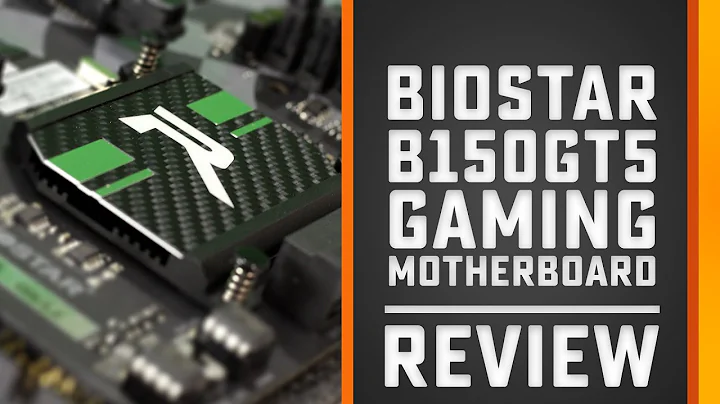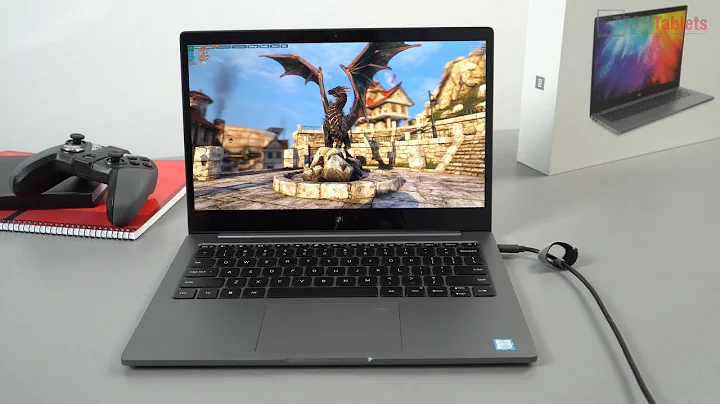Intel and ARM Collaboration: A Game-changer for Intel's Shareholders?
Table of Contents
- Introduction
- Intel's Foundry Updates
- 2.1 Collaboration with ARM on Leading Edge System on Chip Designs
- 2.2 Focus on Mobile System on Chips
- 2.3 Opportunities for Chip Designers
- 2.4 Emphasis on Geopolitical Risk
- 2.5 Intel's Manufacturing Process
- Intel's GPU Expansion
- 3.1 Intel Chasing Arm-Based Architecture
- 3.2 Redesigning GPUs for the Chinese Market
- 3.3 Intel's Exposure in China
- Intel's Exit from the Server Business
- 4.1 Selling Server Business to Mytac
- 4.2 Importance of Core Product Focus
- Conclusion
💡 Highlights
- Intel and ARM announced a collaboration on Leading Edge system on chip designs.
- Collaboration is focused on the mobile system on chips market.
- The collaboration opens up opportunities for chip designers and showcases Intel's manufacturing capabilities.
- Intel is redesigning its GPUs for the Chinese market to gain exposure in China.
- Intel is exiting the server business and focusing on core products.
📝 Article
Intel's Foundry Updates
In recent news, Intel has announced a multi-generation collaboration with ARM on Leading Edge system on chip designs. This collaboration aims to enable chip designers to build low power compute system on chips on Intel's 18a process. While ARM's architecture-based design is widely known for creating chips, integrating Intel's Foundry business into the manufacturing process opens up new possibilities. Chip designers can now easily choose Intel's Foundry business for their ARM-based architecture chip designs.
The collaboration primarily focuses on the mobile system on chips market. This niche market offers chip designers the opportunity to see how Intel performs in the manufacturing process. It also paves the way for potential expansions into other design domains such as automotive, Internet of Things (IoT), and data centers. By showcasing their capabilities in the mobile market, Intel can attract more clients for future projects.
It is worth noting that Intel and ARM have highlighted that the collaboration will primarily involve manufacturing in the United States and Europe. This emphasis on geopolitics subtly suggests that Intel's Foundry business provides a low-risk manufacturing solution compared to Taiwan, a major player in the semiconductor industry.
Intel's 18a process, which is expected to be available in the next few years, will be a significant advancement in their production line. Currently, Intel is working on its 10 nanometer process, while their competitors such as TSMC are shipping five nanometer chips and planning for three nanometer production. Despite the progress being made by their competitors, Intel's investment in the 18a process shows their commitment to advancing their manufacturing capabilities.
Intel's GPU Expansion
One of the most interesting developments from Intel is their focus on GPU expansion. Historically, Intel has been known for its x86-based processors, but they have now shown interest in embracing ARM-based architecture in the manufacturing space. This move could potentially be a significant win for ARM and might even pave the way for ARM's future Initial Public Offering (IPO), much to the interest of investors.
As Intel explores ARM-based chips, it becomes evident that their primary focus is high-performance CPUs in the x86 domain. The decision to incorporate ARM-based chips specifically in the mobile sector allows Intel to avoid direct competition with themselves, creating a symbiotic relationship with ARM.
Regarding GPU designs, Intel has faced substantial losses in recent years. The introduction of their Arc Alchemist line resulted in over 800 million dollars in operating losses from GPU designs alone, generating only about 300 million dollars in revenue. Despite these challenges, Intel recognizes the importance of GPUs in the market, especially in the era of accelerated computing and AI workloads. It is a necessary venture for them to pursue, as failure to do so could prove detrimental to their market position.
In a bold move to increase market access, Intel is redesigning some of their GPUs specifically for the Chinese market. China has become one of the largest consumers of data center services, and Intel aims to capitalize on this growth. By manufacturing GPUs in China, Intel hopes to alleviate some of the export control restrictions that they and other semiconductor players have faced when exporting to China. This strategic decision acknowledges China's significance in the semiconductor market and suggests a potential easing of market restrictions.
Intel's Exit from the Server Business
Intel's recent decision to divest from their pre-built server business comes as little surprise. The server business is notorious for its low margins, requiring significant Scale to be profitable. Since Intel lacked market share in this sector, it made little sense for them to continue investing in it. By selling this business to Mytac, a company based in Southeast Asia, Intel can focus its resources on core products.
With the company's revamped focus on core products, it is worth mentioning their continued investment in GPUs. While Intel faces initial challenges and losses in the GPU market, it is a necessary step to compete with AMD and Nvidia, both of which produce both CPUs and GPUs. Intel recognizes the importance of having an accelerated computing platform, which includes both CPUs and GPUs. The success or failure of their GPU venture will greatly impact their overall performance in the market.
📚 Resources
🙋♀️ FAQ
Q: What is the focus of the collaboration between Intel and ARM?
A: The collaboration aims to enable chip designers to build low power compute system on chips on Intel's 18a process, with a specific focus on the mobile system on chips market.
Q: How will Intel's GPU expansion affect their position in the market?
A: Intel's embrace of ARM-based architecture in the manufacturing space, along with their efforts to redesign GPUs for the Chinese market, shows their commitment to diversifying their offerings and expanding into new market segments.
Q: Why did Intel decide to exit the server business?
A: The server business is known for its low margins, requiring significant scale to be profitable. Since Intel lacked market share in this sector, divesting from the server business allows them to focus on their core products and allocate resources more efficiently.
 WHY YOU SHOULD CHOOSE TOOLIFY
WHY YOU SHOULD CHOOSE TOOLIFY

























